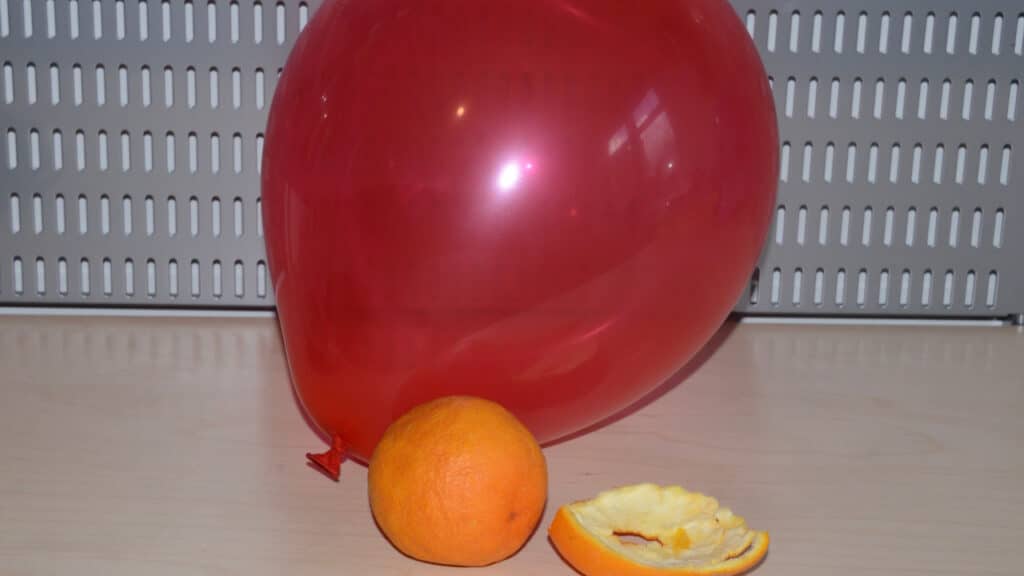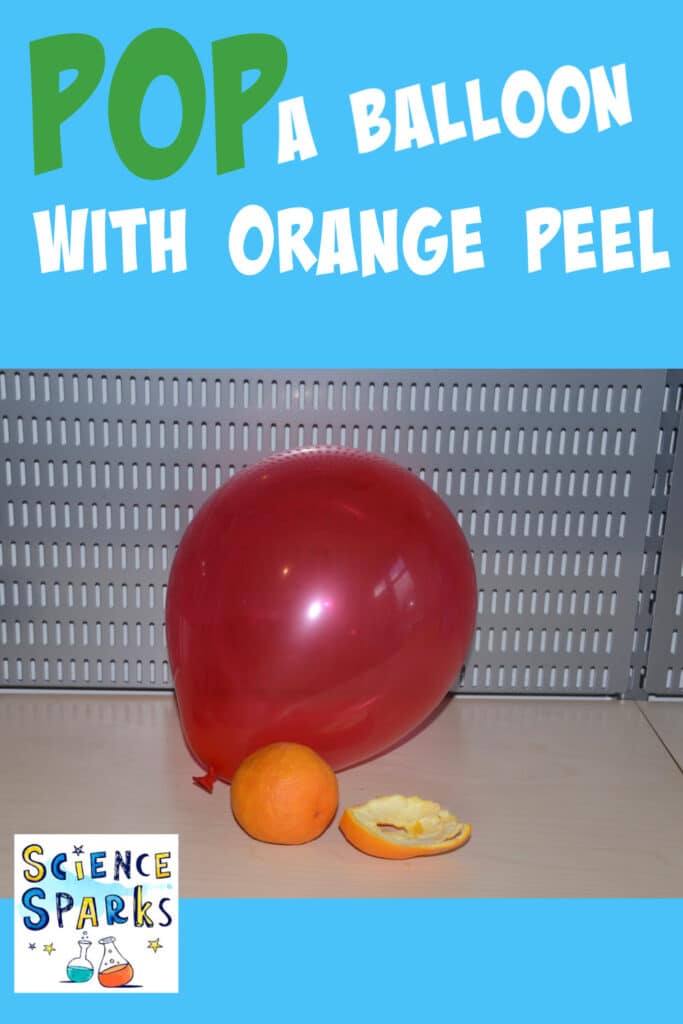Did you know you can pop a balloon using orange peel? This simple science trick is great for parties, as part of a science show or just for fun.
You’ll need
Orange
Several balloons

Instructions
Cut the orange in half ( ask an adult to help )
Remove the orange from the peel.
Squeeze the orange peel over the balloon. It should pop when the juice from the peel hits the balloon.
Why does orange peel pop a balloon?
Orange peel contains a substance called limonene. When the limonene comes into contact with the balloon, it weakens the latex, causing it to pop!
Top tips for popping a balloon with orange peel
Blow the balloon up quite big; the bigger the balloon, the thinner the latex is stretched, and the faster the balloon will pop.
Make some small cuts in the peel when you’ve peeled the orange. This will help the limonene escape from the peel more easily.
Extension Tasks
Experiment with different types of balloons. Thick balloons (made for helium ) should be harder to pop with limonene than thinner balloons such as water balloons.
Try using the peel from a lemon. Can you still pop a balloon?

Last Updated on March 6, 2023 by Emma Vanstone

Leave a Reply